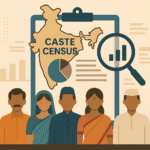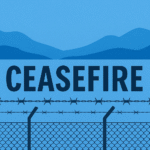Introduction
The Human Right to Freedom of Religion is one of the most fundamental rights recognized in modern democracies and human rights instruments. It upholds each person’s freedom to choose, practice, change, or abstain from religious belief without coercion or discrimination. As societies become more pluralistic, the Right to Freedom of Religion acts as a bedrock for peaceful coexistence and social harmony, allowing individuals and communities to worship, teach, and express their beliefs freely.
Why does this right matter so much today? Around the world, conflicts often arise at the intersection of religion, belief, and identity. Minorities face persecution, and governments impose restrictions in the name of national security or public morals. Understanding this human right—along with its legal grounding, philosophical heritage, and current applications—is crucial to defending religious liberty globally.
This comprehensive guide explores:
- Clear definitions and political importance of right to freedom of religion
- Historical and philosophical foundations
- International legal protections and their limits
- Tensions with other rights and state considerations
- Real-world case studies showing challenges and progress
- Future trends in protecting religious freedom
By the end of this article, you’ll have a clear understanding of how the Human Right to Freedom of Religion operates, why it matters globally, and what lies ahead in our increasingly diverse world.
1. Meaning and Concept
1.1 What Is the Human Right to Freedom of Religion ?
The Human Right to Freedom of Religion means that everyone has the right to believe, practice, change, share, or only privately hold their religion or belief without undue pressure or discrimination. It includes four key freedoms:
- Freedom to have or adopt a religion or belief—this includes choosing no belief.
- Freedom to manifest one’s religion—worship, rituals, teaching, and observance, individually or in community.
- Freedom to change religion—right to convert or leave one’s faith.
- Freedom to express religious identity—through symbols, dress, or religious education.
The parallel term, “Right to Freedom of Religion,” emphasizes this is a recognized right by governments and international bodies. It underpins global human rights frameworks, opening a foundation for religious liberty and pluralism.
1.2 Core Values and Key Aspects
- Belief and Conscience: The right to freedom of religion centers on freedom of conscience—inner conviction free from coercion.
- Individual and Collective Rights: It covers individual practices and communal expressions, honoring both personal belief and collective worship.
- Internal and External Freedoms: Internal freedom is protected absolutely (e.g., belief), while external manifestation can be subject to reasonable limitations—for public safety or order, but not discrimination.
- Non‑Discrimination: Everyone—regardless of religion or belief—must enjoy equal protections.
1.3 Importance in Pluralistic Societies
- Civic Harmony: When governments uphold freedom of religion, diverse religious communities live peacefully.
- Human Dignity: Acknowledging belief and conscience is tied to the inherent dignity of the person.
- Cultural Richness: Religious traditions enrich society—music, architecture, festivals—when expressed freely.
- Protection of Minorities: Helps protect vulnerable religious or belief communities from marginalization or persecution.
2. Theoretical and Philosophical Foundations
2.1 Early Philosophical Roots
The Right to Freedom of Religion finds roots in early thinkers who argued for liberty of conscience:
- John Locke (1632–1704): In his Letter Concerning Toleration (1689), Locke argued that matters of the soul were beyond government authority. He laid the intellectual groundwork for freedom of religion and belief as a natural right.
- Voltaire (1694–1778): A fierce proponent of religious tolerance, he attacked fanaticism and insisted on freedom of expression, including religious speech.
These liberal philosophies influenced the US Constitution’s First Amendment and France’s Declaration of the Rights of Man (1789), establishing modern protections for religious freedom.
2.2 John Stuart Mill
In On Liberty (1859), Mill famously argued that individual freedom—including freedom or religion and religious belief—is essential for personal and social progress, provided it does not harm others. His harm principle supports protection of religious practice except where it threatens public safety or rights of others.
2.3 Enlightenment and Secularism
The Enlightenment advanced secular governance, separating church and state to prevent religious domination. This secular model supports freedom for all beliefs by ensuring the state remains neutral in religious affairs.
2.4 Contemporary Philosophical Thought
- Charles Taylor (in A Secular Age, 2007) describes how modern societies must balance diversity and religious freedom in secular contexts.
- Tariq Modood argues for a pluralist multicultural model where states not only tolerate but actively support diversity, including religious expression within legal limits.
3. Who Are the Thinkers and How Did They Contribute?
- John Locke: Laid the natural rights foundation, arguing belief was a personal matter beyond state control.
- Voltaire: Championed criticism of institutional religion and defense of speech.
- John Stuart Mill: Secured the idea that freedom of belief benefits societal progress.
- Charles Taylor and Modood: Elevated multiculturalist and pluralist theories suitable for diverse 21st-century societies.
Their combined philosophies support the Right to Freedom of Religion by emphasizing conscience, tolerance, civic pluralism, and state neutrality.
4. International Legal Provisions
4.1 Universal Declaration of Human Rights (UDHR, 1948)
- Article 18 declares:
“Everyone has the right to freedom of thought, conscience and religion; this right includes freedom…to manifest one’s religion or belief…in teaching, practice, worship and observance.”
Because the UDHR is a widely endorsed global standard, it shaped binding treaties covering religious liberty.
4.2 International Covenant on Civil and Political Rights (ICCPR, 1966)
This critical treaty elaborates on Article 18:
- Article 18(1) ensures freedom of thought, conscience, and religion.
- Article 18(2) allows only “limitations prescribed by law and necessary to protect public safety, order, health, morals, or fundamental rights.”
- Article 18(3) grants freedom not to be forced to express religious belief.
- Article 18(4) protects parents’ rights to provide religious education to their children.
The Human Rights Committee, monitoring ICCPR, issues interpretive documents clarifying exceptions and protections.
4.3 Regional Human Rights Systems
- European Convention on Human Rights (ECHR) in Article 9 protects religious freedom with limitations.
- American Convention on Human Rights and African Charter on Human and Peoples’ Rights likewise guarantee freedom of conscience and religion.
4.4 Specialized Instruments
- Declaration on the Elimination of All Forms of Intolerance and of Discrimination Based on Religion or Belief (1981) reinforces global norms.
- 1993 Declaration protects ethnic, cultural, linguistic groups including religious minorities.
- The 1998 Rome Statute treats religious persecution as a crime against humanity.
4.5 Limitations vs. Restrictions
International law differentiates between:
- Legitimate limitations: to protect public safety, morals, or rights of others
- Illegitimate restrictions: laws targeting only religious practice to suppress beliefs
4.A Freedom of Religion under the Indian Constitution
India, as a secular and pluralistic democracy, provides strong constitutional guarantees for the Right to Freedom of Religion under Part III of the Fundamental Rights. These provisions reflect India’s diverse cultural and religious heritage and are designed to ensure both individual liberty and communal harmony.
Articles 25 to 28: Core Provisions
- Article 25 – Freedom of Conscience and Free Profession, Practice, and Propagation of Religion
- Every person has the freedom of conscience and the right to freely profess, practice, and propagate any religion.
- However, this right is subject to public order, morality, health, and other provisions of Part III.
- It includes the right to propagate one’s religion but not the right to forcibly convert others.
- Article 26 – Freedom to Manage Religious Affairs
- Every religious denomination or any section thereof has the right:
- (a) To establish and maintain institutions for religious and charitable purposes
- (b) To manage its own affairs in matters of religion
- (c) To own and acquire movable and immovable property
- (d) To administer such property in accordance with law
- Every religious denomination or any section thereof has the right:
- Article 27 – Freedom from Taxation for Promotion of Religion
- No person shall be compelled to pay any taxes for the promotion or maintenance of any particular religion or religious denomination.
- This ensures that state funds are not used to favor one religion over another.
- Article 28 – Freedom as to Attendance at Religious Instruction in Certain Educational Institutions
- No religious instruction shall be provided in any educational institution wholly maintained by State funds.
- Religious instruction can only be provided in institutions managed by trusts or with prior consent of individuals attending them.
Balancing Religious Freedom with Other Interests
- These rights are not absolute; they can be regulated for reasons of public order, morality, and health.
- For example, in cases like Shirur Mutt v. State of Madras (1954), the Supreme Court of India clarified what constitutes “essential religious practices” protected by Article 25.
Significance in Indian Democracy
- India’s constitutional scheme ensures that all religions are treated equally, embodying the principle of secularism enshrined in the Preamble.
- It provides positive protection to minorities, allowing them to preserve their religious identity while promoting interfaith tolerance.
So now, when we speak of the Human Right to Freedom of Religion, the Indian Constitution provides one of the most detailed domestic frameworks globally—ensuring both individual belief and institutional autonomy, while maintaining a secular state structure.
5. Scope and Application
5.1 Individual vs. Collective Rights
The Human Right to Freedom of Religion is exercised individually and through communities of faith—churches, mosques, schools. It ensures communal worship and religious education are protected.
5.2 Internal vs. External Freedoms
- Internal freedom (belief) is absolute.
- External freedom (manifestation) can legally have limits—provided they are non-discriminatory and justified.
5.3 Freedom to Change Belief
International law protects the right to convert, including apostasy—though some states penalize religious conversion severely, violating international norms.
5.4 Proselytism and Evangelism
Peaceful proselytism—sharing belief—is generally protected. Coercive or coercive acts to recruit are illegal.
Interpretation by regional courts (e.g., ECtHR) clarifies boundaries.
5.5 Religious Education of Minors
Parents are entitled to educate children according to their convictions, but states can set neutral educational standards for civic integration.
6. Tensions and Limitations
6.1 Public Health and Emergencies
During emergencies, governments may temporarily restrict religious gatherings—for example, COVID-19 rules limited worship services to protect public health.
6.2 Public Order and Extremism
Religious expression can be limited if it incites violence or hatred. Countries regularly criminalize extremist religious ideologies to protect other rights and peace.
6.3 Human Rights Conflicts
- Gender equality may conflict with religious dress codes or practices.
- Children’s rights—e.g. exorcisms—must be balanced against parental religious freedom.
- Animal rights: religious slaughter vs. animal welfare laws.
6.4 Limits Imposed by States
Some governments ban religious attire, restrict religious literature, or surveil places of worship—all often violating international standards unless they meet strict legal tests.
7. Real-World Challenges and Case Studies
7.1 Persecution of Religious Minorities
Groups like the religious, ethnic and national minorities face religious discrimination and persecution in many parts of the world. For details read UN Reports on religious persecution.
7.2 Legal vs. Practical Barriers
Even where religious freedom is in constitutions, minorities—such as Ahmadiyyas in Pakistan or Jehovah’s Witnesses in Russia—face systemic legal bans.
7.3 Religious Symbols, Attire, and Identity
Countries like France (hijab ban) and Turkey (initial headscarf ban) illustrate conflicts between secular public policy and religious expression—leading to major court cases at the European Court of Human Rights or national courts.
7.4 Secular Nationalism
Efforts to promote a single dominant religion in public life—in countries like India and Myanmar—often undermine religious freedoms by excluding non-majority communities.
8. Global Importance and Future Implications
The Human Right to Freedom of Religion is not merely an individual right; it has profound social, political, and global implications. In an interconnected world, respecting this right affects peace, democracy, digital discourse, and even environmental and migration challenges. As we move further into the 21st century, the need to uphold and adapt this right becomes more urgent.
8.1 Global Peace and Stability
Religious diversity is a reality in almost every country, and how states handle it often determines whether societies lean toward peace or conflict.
- Promotes Dialogue and Mutual Respect: When people are free to practice and express their beliefs, they are more likely to engage in dialogue rather than violence. For example, in countries like Canada and Norway, policies encouraging pluralism have reduced interreligious tensions.
- Prevents Extremism: Suppressing religious freedom often fuels underground movements, radicalization, and resentment. Conversely, open societies that protect the Right to Freedom of Religion build trust and resilience against extremism.
- Conflict Prevention: Many violent conflicts have roots in religious or ethnic identity. By protecting religious minorities, states can avoid deepening historical grievances that lead to cycles of violence.
In short, societies that respect religious freedom tend to be more tolerant, cohesive, and peaceful, while those that restrict it often experience internal unrest, persecution, or even civil war.
8.2 Democracy and Rule of Law
Religious freedom is a pillar of democracy and essential for the rule of law:
- Freedom of Conscience as a Democratic Value: Democracies thrive on diversity of thought. Allowing people to choose their faith—or choose none—affirms the principle that individuals are free to govern their own lives.
- Protecting Minority Voices: True democracy is not just the rule of the majority; it also safeguards minorities. By ensuring that even small religious groups have space to exist, democracies affirm their commitment to equality.
- Encourages Civic Activism: Many civil rights movements have religious roots, such as Martin Luther King Jr.’s Christian-inspired fight for racial equality. Free religious expression can therefore inspire broader social reforms.
- Limits State Power: When the state cannot impose or favor a particular religion, it reinforces the idea that the government is neutral and accountable to all citizens equally.
Where religious freedom declines, authoritarian tendencies often rise, showing how closely this right is linked to broader political freedom.
8.3 Interfaith Cooperation
Religious freedom creates fertile ground for interfaith dialogue and cooperation:
- Healing Historical Divides: Centuries-old tensions—such as those between Christians and Muslims in parts of Africa or between Buddhists and Muslims in Asia—can be eased through structured dialogue in societies where religious freedom is guaranteed.
- Working on Shared Goals: Faith-based groups often unite across belief systems to fight poverty, provide disaster relief, and promote education. For example, in Indonesia, interfaith networks collaborate to aid earthquake victims regardless of religious identity.
- Reducing Prejudice: When individuals encounter different religions in a respectful environment, stereotypes and biases diminish. Interfaith programs in schools and workplaces build mutual understanding and empathy.
In an age where global challenges like climate change, pandemics, and inequality require collective action, religious freedom enables cooperation across belief systems, turning diversity into strength rather than division.
8.4 The Digital Age
The rise of the internet and social media has transformed how religion is practiced, shared, and even contested:
- New Platforms for Expression: Online spaces allow believers to share prayers, sermons, and teachings with a global audience. Religious minorities, often silenced offline, find their voice online.
- Battleground for Hate Speech: Unfortunately, the same platforms also spread religious hate speech, misinformation, and extremist propaganda. Digital manipulation can incite violence against certain religious groups, as seen in Myanmar with anti-Rohingya campaigns on Facebook.
- Balancing Regulation and Freedom: Governments and tech companies must navigate the fine line between removing hate content and protecting the Right to Freedom of Religion online. Over-regulation could stifle legitimate expression; under-regulation risks fueling hatred.
- Virtual Worship & New Norms: During the COVID-19 pandemic, online worship services became common. This raises new legal questions about the status of digital religious communities and their rights.
The digital age expands religious freedom beyond physical spaces, but it also demands new legal and ethical frameworks to handle the challenges of online religion and belief.
8.5 Climate Migration and Religious Minority Rights
Climate change is creating new existential threats that intersect with religious identity:
- Disappearing Sacred Lands: Small island nations like Kiribati and Tuvalu risk total submersion due to rising sea levels. For indigenous populations, the loss is not just territorial but spiritual, as sacred sites and ancestral burial grounds vanish.
- Forced Migration and Cultural Erosion: Climate refugees who relocate may lose access to their traditional places of worship, rituals, and festivals, leading to gradual erosion of religious practices.
- Threats to Indigenous Faiths: Many indigenous religions are deeply tied to specific landscapes—mountains, rivers, forests. When these environments are destroyed by climate disasters, the communities lose the very basis of their spirituality.
- Global Responsibility: International law currently does not fully protect climate refugees, and religious dimensions of their identity often go overlooked. Future legal frameworks must ensure displaced religious communities retain their identity, heritage, and freedom to worship.
Preserving religious diversity amid climate-induced displacement is essential for maintaining cultural and spiritual heritage on a global scale.
8.6 Why Future Protection Is Critical
Looking ahead, the Human Right to Freedom of Religion faces unprecedented challenges:
- Rising religious nationalism in some countries threatens pluralism.
- Digital surveillance risks restricting private religious life.
- Migration crises and economic inequality may lead to scapegoating minorities.
To safeguard the future, global efforts must focus on:
- Strengthening international treaties and monitoring bodies.
- Promoting education on tolerance and human rights.
- Ensuring digital platforms uphold ethical standards without suppressing legitimate belief.
- Protecting migrants and indigenous faiths impacted by climate change.
Ultimately, the global importance of this right cannot be overstated—it shapes peace, democracy, identity, and dignity for billions of people.
9. Conclusion
The Human Right to Freedom of Religion remains a cornerstone of personal freedom and societal well-being. Grounded in centuries of philosophical thought—from Locke’s embrace of conscience, to Mill’s defense of liberty, to modern multicultural pluralism—it lies at the heart of international legal frameworks like the UDHR, ICCPR, and ECHR.
At its best, this right builds inclusive societies where diverse beliefs thrive. At its worst, its abuse leads to discrimination and conflict. Balancing religious freedom with public safety, equality, and rights protections poses continuing challenges.
Looking ahead, threats such as authoritarianism, sectarianism, digital manipulation, and religious nationalism will test global commitment to religious freedom. But the benefits—peace, justice, and human dignity—make its defense imperative.
Protecting the Right to Freedom of Religion, in both individual practice and collective worship, helps us build a world where every person—regardless of belief—can live with dignity, purpose, and respect.
📚 References on Human Right to freedom of religion
Books and Philosophical Thinkers
- Locke, J. (1689). A letter concerning toleration. London: Awnsham Churchill.
- Mill, J. S. (1859). On liberty. London: John W. Parker and Son.
- Taylor, C. (2007). A secular age. Cambridge, MA: Harvard University Press.
- Modood, T. (2007). Multiculturalism: A civic idea. Cambridge: Polity Press.
- Voltaire. (1763). Treatise on tolerance. Paris: Garnier-Flammarion.
International Legal Documents
- United Nations. (1948). Universal Declaration of Human Rights. Retrieved from
https://www.un.org/en/about-us/universal-declaration-of-human-rights - United Nations. (1966). International Covenant on Civil and Political Rights. Retrieved from
https://www.ohchr.org/en/instruments-mechanisms/instruments/international-covenant-civil-and-political-rights - United Nations. (1981). Declaration on the Elimination of All Forms of Intolerance and of Discrimination Based on Religion or Belief. Retrieved from
https://www.ohchr.org/en/instruments-mechanisms/instruments/declaration-elimination-all-forms-intolerance-and-discrimination-based-religion-or-belief - Council of Europe. (1950). European Convention on Human Rights. Retrieved from
https://www.echr.coe.int/
Indian Constitutional Provisions
- Government of India. (1950). The Constitution of India. Retrieved from
https://legislative.gov.in/constitution-of-india
Reports and Case Studies
- United States Commission on International Religious Freedom (USCIRF). (2023). Annual Report on Religious Freedom. Retrieved from
https://www.uscirf.gov/ - Human Rights Watch. (2023). World report 2023: Events of 2022. Retrieved from
https://www.hrw.org/world-report/2023 - Amnesty International. (2023). Freedom of religion and belief. Retrieved from
https://www.amnesty.org/





